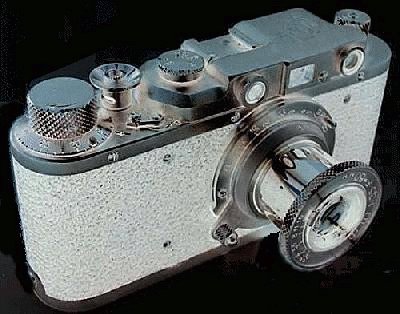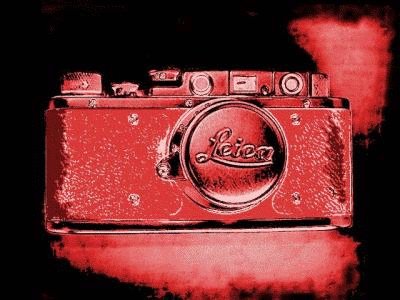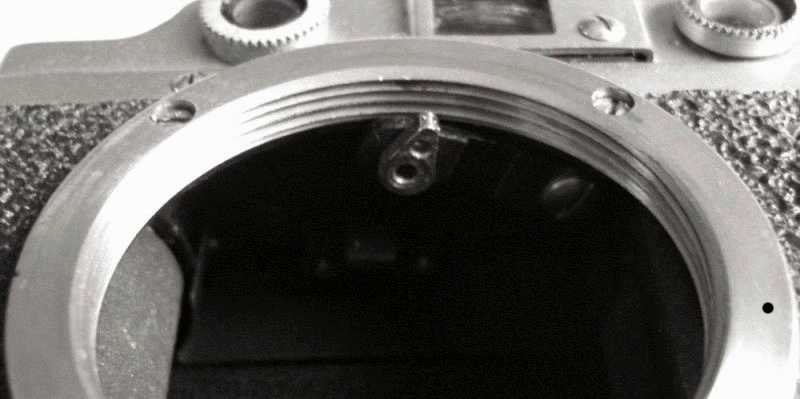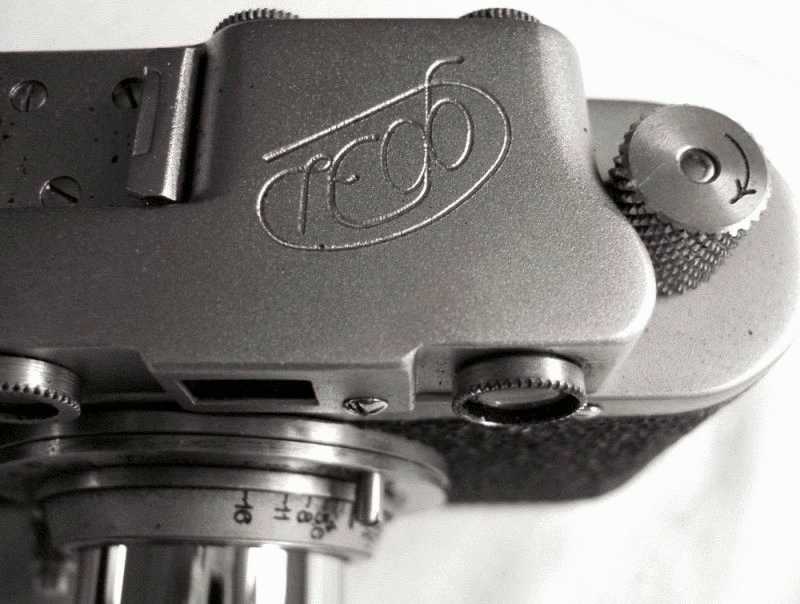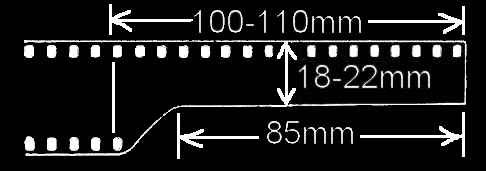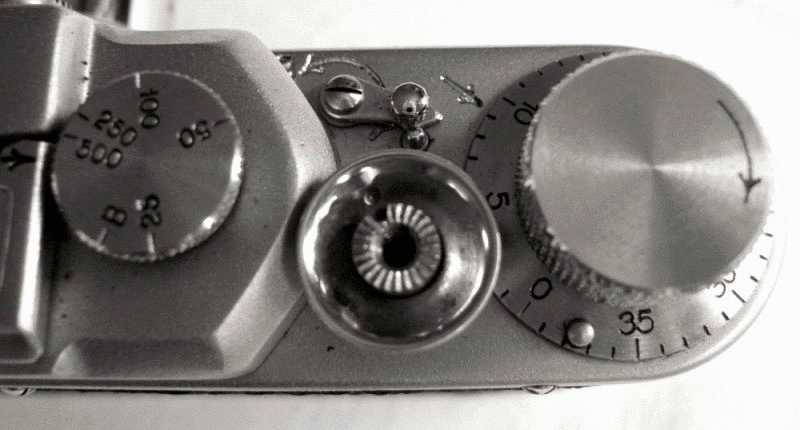| INDEX FED-1 FED-2 FED-3 FED-4 FED-5 FED-6TTL FED-7 FEDKA FAG FED-S FED-V PIONEER TSVVS |
|
|
FED CAMERAI decided to pick the Fed 1 or Fedka camera for a web page creation project as it is the most produced copy of the Leica II and as such made serious photography accessible to all. The production run was an exceptional 22 years with 700 thousand cameras being manufactured. Hardly any mention was made in the mainstream English language photography books and magazines at the time, which is another reason to put the record straight. I have decided to make this more interesting by including a conspiracy theory that I hope causes some debate in the Leica community. The camera photographed in this text is my own Fed 1 Serial Number (SN) 582605 which dates from 1955.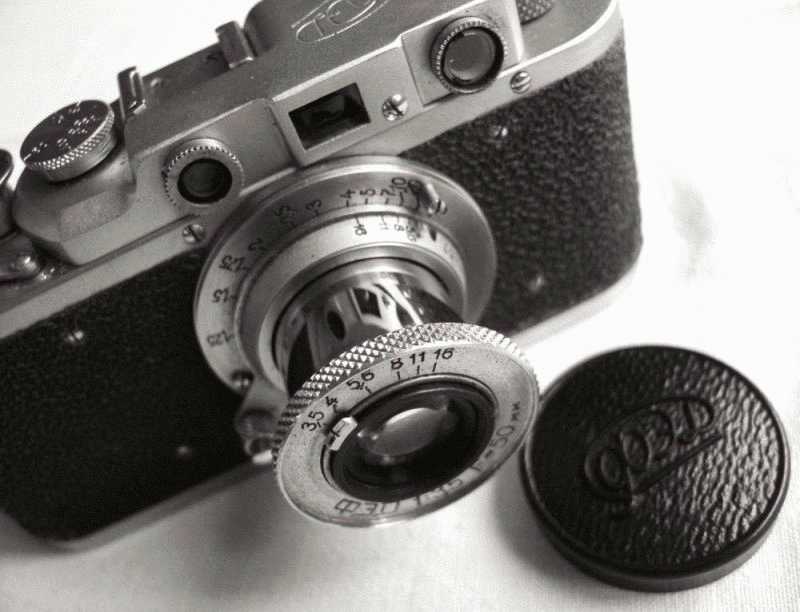 INDUSTRIAL ESPIONAGEThe Fed 1 camera may not have been a Leica copy at all but a Soviet home grown design based on the earlier Pioneer and FAG cameras. Oskar Barnack Leica may have been a product of industrial espionage and that the design was in fact pioneered at the VOOMP secret experimental factory in Leningrad in the early part of the 20th century. It is known that this VOOMP secret research establishment produced a Pioneer I camera very similar to the Leica I in 1932 and went on to produce the Pioneer II camera in 1933 which was very similar to the the Leica II. There is also evidence to suggest that Germany in the 1920's and 30's developed and used Soviet industry and expertise to get around the restrictions imposed on them by the outcome of World War 1. Against this sort of confusing industrial history and if you throw in the fact that Fed 2 with its improved shutter and ergonomic layout appeared in prototype form in 1939 long before Leica came up with anything similar. Then it all begins to make sense, the early Leica I, II are in fact just clones of Soviet produced cameras.We can trace the origins of this German-Soviet co-operation back to April 16th, 1922 with the signing of the Treaty of Rapallo, an agreement made in the Italian town of Rapallo between Germany's Weimar Republic and Bolshevist Russia, under which each renounced all territorial and financial claims against the other following the Treaty of Brest-Litovsk and World War I. The two governments also agreed to normalize their diplomatic relations and to co-operate in a spirit of mutual goodwill in meeting the economic needs of both countries. If you look at the German governments situation in the 1920's in more detail you can see that out of desperation they tried to circumnavigate some of the hundreds of articles of the 1919 Peace Treaty of Versailles. This was to some degree achieved by co-operating secretly with other military powers. These include China German Co-operation and Relations, Japanese-German Co-operation and German-Soviet co-operation. One of the major goals of the Versailles Treaty was to suppress or hinder development of technical equipment that could be used for military purposes. Obviously a small compact cameras like the FED 1 would have significant military applications as in aerial photography or on the battlefield in the form of the Fotosniper. The peace treaty had stripped Germany of an Air Force, Navy and most of its Army. This soon led to the birth of widely used glider clubs training a nucleus of clandestine air force pilots. These pilots had to be trained at some point on real powered aircraft which took place at secret locations in the Soviet Union . Also in World War 1, every air force already had aerial surveillance units, however the equipment most likely would have been much too bulky for use in the new single seater's and delicate to fly gliding planes. It is interesting to note that the Germans were also the first to use Gliders in Warfare, most famously during the assault of the Eben Emael fortress on the 10th May 1940 in DFS 230 Gliders - More German Gliding history at Wikipedia Link. A camera like the FED 1 which could be operated single handed most of the time and with interchangeable high-res lenses would have been an ideal photo reconnaissance tool. If produced in Germany in the early 1920's, a sophisticated camera like the Leica would have been singled out under the treaty and banned by the authorities. Another interesting point about the origins of the Leica name is that Military leaders like code names. There were code names in USSR-Germany military co-operation. Germans were referred to as "friends". Other names were "Tomka" or "Tomko" for the project in chemical weapons, "Kama" for tank school and many more... So "Leica" could be a code name of the project in aerial optics. Later on in the 1930's some of the treaty articles were lifted and others ignored by the German government. This all fits in nicely with the Leica and Fed being mass produced in the early 1930's. As a result of the "Treaty of Rapallo" the Soviet Union allowed Germany to use there facilities and territory to develop military hardware and train pilots and given the overall situation of these times it casts some doubt on the official Leica story. There was a final twist to all this with the Molotov Ribbentrop Pact between Nazi Germany and the Soviet Union signed in Moscow in 1939. 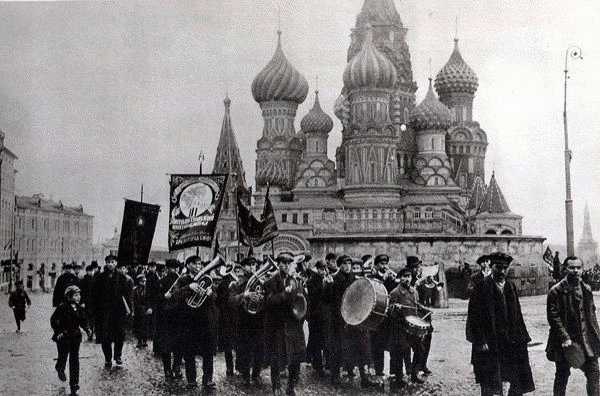 We cannot be sure of the exact facts surrounding this, however if you look at the Soviet situation in the immediate post World War 1 years. They had suffered a humiliating defeat, they were involved in an ongoing civil war that was trying to crush Bolshevist forces. Germany was to some degree seen as a friendly nation and communism in fact flourished in Germany up until the Nazis came to power and crushed them. So Germany was welcomed with open arms and both countries benefited from this co-operation. As can be seen by the military hardware that surfaced during the Second World War this relationship was very useful to both countries. The Secret VOOMP experimental research establishment had been working on the Pioneer camera design for years finally coming public on its existence when they realized that through industrial espionage that the very similar Leica was about to go into production in Germany. Also the industrial espionage of the period did not just go in one direction. It looks as if the Soviets obtained technical information from Zeiss on lens designs. The lens used in the FED 1 is apparently based on the Zeiss Tessar and not the Leitz Elmar design - see below for more on this. If you look at the claimed inventor of the Leica Oscar Barnack in detail you will find that the Leica design was not so revolutionary as we are led to believe. The Barnack UR camera existed in 1912-13 can be seen as insignificant by the fact it was just a glorified exposure meter with an odd set of shutter speeds (20th-40th second) aimed at testing strips of cine film for his movie camera. The FED 1 slow shutter speeds of 20th, 30th 40th, 60th 100th 200th and 500th had more to do with slow film speeds of the period than from those used on this exposure meter. Even the lens originally fitted to the UR camera was a 50mm Zeiss Kino Tessar and not a Leitz product, this was to be identical to that used on the movie camera. The camera size was not the same as the later Leica or Fed 1 and most significantly is that other cameras very similar in concept existed during this early period. One in particular was the Vest Pocket Kodak as it was the same shape and even smaller. It was used to take many a photograph in the First World War trenches. The first full scale 35mm production camera was not a Leica but the Homeos of 1913. This being a very sophisticated stereo camera of smallish size with two Tessar lenses produced by Jules Richard. Barnack considered his camera redundant when it first went on sale in the mid 1920's . We can only speculate why he felt this way but it was probably because he knew it was a copy of a Soviet camera design and maybe he could not come to terms with that fact so put the project down. There was nothing new in the variable slit cloth rubberized focal plane shutter, only in the fact it was self capping as you advanced the film. Also miniature 35mm camera had existed since around 1900 but not as part of a sophisticated system camera with military uses. If you look at the Leica III of 1935 and its slow speeds and the IIIa with its 1000th second shutter speed of 1938 and it is often overlooked that FED may have refused to be beaten to the post again by German industrial espionage and revealed the FED S and V in 1938-39. Also the FED 2 with its improved shutter appeared the very same year as the Leica IIIa. This new shutter was revolutionary as it could be set regardless of the shutter state being cocked or uncocked. From 1939 the Soviet camera industry held a significant lead in technological terms on rangefinder design right up to the introduction of the far more advanced Leica M series camera range in 1954. The famous Soviet photographer Alexander Rodchenko, who was among first Fed 1 users (or was it Leica?). Also for some time in the 1920's to the early 40's Leica in Russian was a synonym for a 35mm camera and as such had become a Genericized trademark An example of this is the use in Soviet songs. One of them, about war journalists, has the following words : With Leica and with notepad And sometimes with machine gun We passed through fire and frost. Here are some music links: Song 1- mp3 Song 2- mp3 Song text in Russian This all sounds stranger than than fiction and reads more like a James Bond plot for the next film called the "Camera Man". I will let you make your own minds up as you can see some of the evidence does cast serious doubts on the origin of these cameras. 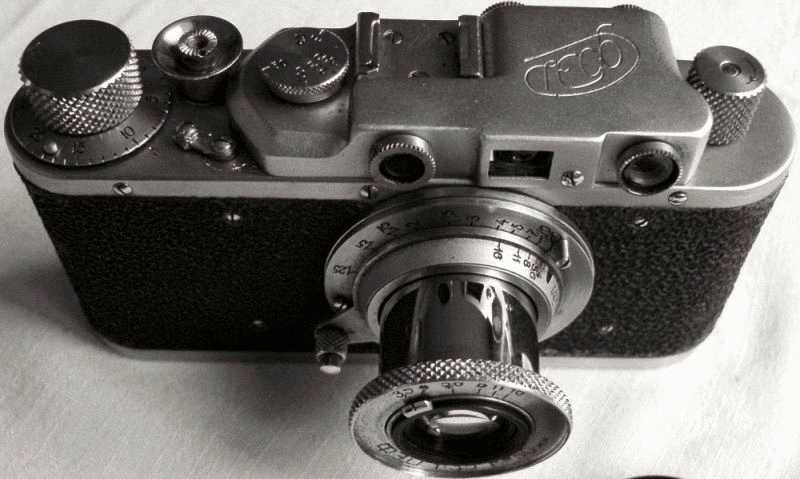 PIONEER TO FAG CAMERAVery little is known about these cameras and few examples survive. The Pioneer cameras were made at the VOOMP Experimental Factory St Petersburg Russia, formerly Leningrad in the USSR. Only 200-500 were made.1932-33 - The VOOMP I or Pioneer I was identical to a Leica I Very few were manufactured and none have survived. 1933-35 - The VOOMP II or Pioneer II had a flat range finder top with no accessory shoe and flat top. Except in minor detail it was more or less identical to Leica II. 5000 were planned for production in 1935 however less than 500 were made. As this main production model I have included a brief specification: 24x36mm frame 35 film, separate range finder viewfinder window, coupled range finder, range finder split image was yellow, lens focusing knob identical to Leica, Lens barrel detail design Leitz Elmar, shutter speeds 20th - 500th plus B, lens mount 40mm screw not 39mm Leica. Photographs of a 1934 Pioneer II Photographs of Pioneer II 1937-43 - The VOOMP-GOI or Pioneer III appears to have been the basis of a photographic gun or Fotosniper produced in quantities of less than 500 from 1937 onwards till 1943. The camera was for military use and was supplied in olive green and black . The lens was GOI f4.5 300mm with click locking apertures and of very high quality. The camera had a reflex cage with instant return mirror attached between the lens and the camera body. It had a rifle stock into which the camera reflex cage and lens attached and trigger operated shutter. The camera also came with a f3.5 50mm lens. Engravings GOI: Institute of State Optics, NKTP: Commissariat of People of Industry, VOOMP: Federation of Optical and Mechanical Enterprises. According to Sovietskoe Foto Magazine No.7, 1934 states that production of the Pioneer camera was halted in June 1934 and transferred to the Moscow factory, Geodezia which apparently was part of VOOMP. Apparently a decision was made in 1933 that this moscow firm would produce the Leica copy. However in the same time period the FED factory in Kharkov was about to mass produce the Fed 1 which probably resulted in the end of the plans to manufacture this camera in Moscow, only a few hundred were manufactured. 50 examples of this camera at the begining of 1934 without any engravings were distributed to reporters for testing. The plan was to produce 300 by the end of 1934 and 1500 in 1935, obviously the Fed 1 stopped this project in its tracks. These cameras were known as the FAG: 1934-35 - FAG I very similar to Pioneer II with flat top plate and no engravings. The major difference being that the lens was not interchangable. Lens f3.5 50mm Elmar copy focussing lock as on Leica I. - FAG II had interchangable lens fixed with three screws. 1935 - FAG 3 identical to Pioneer II but with an interchangable back of design similar to Zeiss Contax. This design feature was to be seen later in the Fed 2 prototype of 1939. 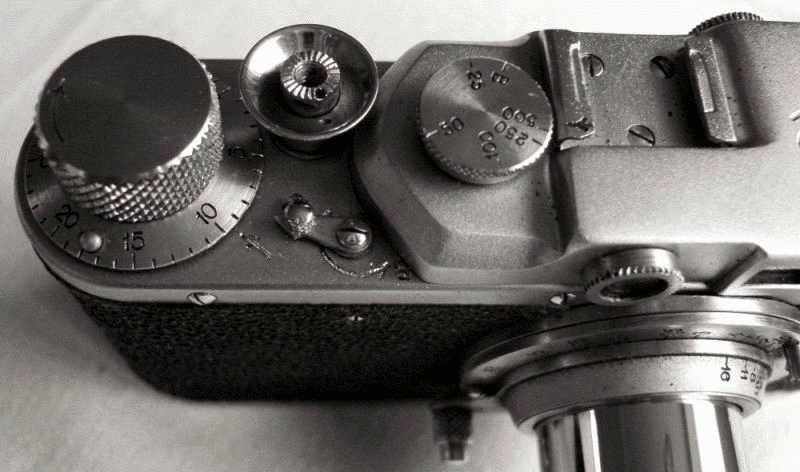 FEDKA CAMERAThe FED 1 was a masterpiece of camera design, however it must not be forgotten that child slave labour and possibly political prisoners were used in its production. The Soviet Union in the 1930's was a very dangerous place where the Communist dream had been hijacked by Joseph Stalin who in fact was an evil fascist dictator, hell bent on opposing capitalism, socialism and communism by controlling every form of national activity. He was anti-democratic, permitting no other political party to exist and tolerating no opposition. Unfortunatly he operated under the umbrella of Socialism and Communism this has done great damage to the reputation these political movements which can be seen to this day.The FED 1 was the first mass produced Soviet Leica II copy and as such is the most significant camera historically. More people have used Fed range finder cameras than Leica with production of all types running to approximately 7 million cameras with over 700k Fed 1's. Its production started in 1934 and lasted untill 1955, with an interruption during World War II. At least seven different variations of the FED 1 are known. There was even a three prototype exact copies of the Leica Ia manufactured in 1932 followed by 30 pre-production run in 1933. The FED was named after Felix Edmundovich Dzerjinski (1877-1926) the founder of the Soviet Secret Police which in 1926 the year of his death became the Confederate State Political Department (OGPU). In 1927 the Ukarainium political board decided to create a workers commune with the same name FED and by 1932 they were manufacturing Leica copies. The commune was located in the outskirts of Kharkov in 1927 with an initial work force of 150 boys and girls aged between 13 and 17. Interestingly they also made drills similar or identical to the American Black & Decker's in the early 1930s. For a more detailed account of this history you should read Oscar Fricke - The Dzerzhinsky Comune Story
COLLECTORS GUIDEPhotograph above shows the simplified range finder cam used on the majority of Soviet made range finder cameras. It can also be used to identify if a Leica is a Soviet made fake as a real Leica has a more elaborate wheel type assembly. The first production version the 1934 Fedka or FED 1 was slightly different from the earlier Pioneer II camera in that it had a recess in the top plate for an accessory shoe, albeit it still did not have one fitted untill SN 8/9000, which was some time in 1935. The following table gives a rough idea of numbers manufactured per year.FED
1 SERIAL NUMBERS - PRODUCTION NUMBERS V (B) 1938 - 40 S 1938 - 41 - 2k Please note that these serial numbers are approximate as is the estimate production numbers. During World War Two production was shifted to siberia as the factory in Kharkov was overrun by the Nazis. During this period and immediatly after the war some serial numbers between 174000 - 180000 were used on cameras built in Berdsk in Siberia, even in the first few months of 1946. SUB TYPE INFORMATIONThe following types are nomenclature used by collectors as no Fed 1 camera was actually marked in this way. I have included some brief descriptions so as to ease identification. 1a
1934-35 SN 31- 6000 - some early production had poor
galvanized
finish rather than the normal satin chrome. Early production
quality
was poor albeit now these cameras are valuable as very rare. Some
with green shutter curtains. The rangefinder viewfinder window glass
sometimes green or blue with rangefinder double image in pink to give
good contrast. For more detail
see specification in section some way below. 1b 1935-37 SN 6000 - 55000 - Some with the NKVD engraving "Peoples Commissariat of Internal Affairs" which was the new name for Stalin's secret police. Identifiable by the plate covering the front range finder was now a rectangle. Before it had been an irregular shape as on the Leica II. Photograph of a FED-1b SN7377 1c 1937-39 SN 55000 - 125000 - In 1937, triangular cam follower replaced circular Leica type cam follower, a slightly modified speed dial more like a Leica II. Also 28mm and 100mm lenses were made available. Accessories pocket tripod, delay action device, close-up lenses, darkroom equipment and filters appeared in this period. S
1938 - 41 - Identical to 1c albeit produced with
a
faster 1000th of a second shutter speed. These camera usually came
equipped with 50mm f2 copy of the Leitz Summar lens. 2000 example
manufactured. V (B) 1938 - Identical to 1c except with a faster 1000th of a second shutter speed and a slow speed dial. This being a copy of the Leica IIIa camera came equiped with 50mm f2 copy of the Leitz Summar. Only were 40 made. so a lot of fakes are in circulation to trap the unwary at camera fairs. 1d 1939 - 41 (August) SN 125000 - 180000 - Idebtifiable by centre retaining screw being off centre and not concealed by the lens mout flange. Also in 1939 Ukaraine lost its nominal independance from Russia and camera engraving changed to highlight this from UkSSR to USSR. 1d 1942 - 45 SN 174000 - 178000 - Around 4000 cameras manufactured in Berdsk from parts evacuated from the FED Ukaraine factory before it was overrun by the Nazis. 1e SN 174000 - 180000 - Around 1000 manufactured in Berdsk in Siberia in the first few months of 1946 after hostilities ended using parts made before the war. After returning to Kharkov the FED organisation became independent pf the NKVD. Als the camera had a superior shutter assembly in a brass housing rather than the earlier aluminium design. T Engraved "Red Flag" in honour of new masters produced around SN 200000 and was fitted with a Industar 10 50mm f3.5 coated Industar 10 lens 1f 1949 - 53 SN 201800 - 400000 - New cursive script Fed logo, flatter shutter button, coated lens engraved with what was then called the international f stops, f4, f5.6 and so on rather than the earlier f4.5, f6.3. Lens came with a bakelite lens cap and not metal. 1949 -50 TSVVS - A remarkable camera taking the Contax bayonet mount and Leica body to produce a hybrid camera. Produced in very small numbers for presentation to Senior officers in the Topographic Service of the army Air Force known as the TSVVS. A much modified fed with brass body rather than aluminum fitted with Contax bayonet mount genuine Carl Zeiss Sonnar f1.5 or f2 50mm lenses removed as spoils of war from the Zeiss factory at Jena. Again a lot of fakes in circulation. Also interest is the Nikon range finder camera as they also had a Contax bayonet mount and Leica shutter. Photographs of a TSVVS SN577 & TSVVS SN467 1g
1953 - 55 SN 400000 - 800000 - Shutter speeds changed to 25th,
50th,100th instead of old Leica 20th, 30th, 40th, 60th.
Threaded
shutter button to accept standard shutter release instead external
thread Leica cable release which fitted over thebutton of earlier
cameras. Mushroom type surround to shutter release. FAKES - there are a lot of fakes in circulation which attempt to look like the real Leica II complete with correct markings. There are even fake special presentation versions and obviously specialist cameras like the TSVVS have become victims. Photographs of a FED-1 Stalanist More information on fakes Link 1 & Link 2
LENS TYPE INFORMATION100mm f6.3 Fed lens first made in 1938. Supplied with viewfinder less than 20k produced. 100mm f5.9 1937- 38 Fed lens, it was advised to be used at f6.3 or more. 50mm f3.5 Industar-10 copy of Leitz Elmar 50mm f3.5 manufactured 1934-46 and fitted to most FED 1a, 1b, 1c and 1d. Old style aperture f4.5, f6.3. From 1949 coated. From 1948 or 49 new international f stops, f4, f5.6 and so on. The most produced lens and even fitted to the next generation Fed 2 camera and supplied to China for fitting on Chinese made Leica copies - Dai Lai "Popular" (Fed 1 or Zorki 1 copy), Shanghai and Chang Chiang "Yangtze River" (Fed 2 Copy). 50mm f2 Fed copy of Leitz Summar 1938-41. A 6 element design with f2 to f18. 28mm f4.5 Fed wideangle lens 1938 -39. A 6 element design with f4.5 to f18. A viewfinder was produced in 1939 in very small quantaties. A number of macro lenses existed in 50mm f3.5 form. Some time probably between 1947-49 when the first KMZ Fed-Zorki cameras were being assembled at KMZ factory Moscow with the collaboration of Fed engineers the switch was made from Leitz Elmar 50mm f3.5 to Tessar 50mm f3.5 occurred, albeit still in the same collapsible mount. This probably happenned due to technical information taken as spoils of war from the Zeiss factory which was in the Soviet controlled zone of East Germany. The KMZ version of this Tessar lens was the Industar-22. The
original Industar-10 lens manufactured between 1934-46 was a
more
or less exact copy of the Leitz Elmar 4 element lens that first
appeared in 1924. This was based on the earlier 5
element
Leitz Elmax was patented already in 1920. The
Industar-10, Elmar & Tessar had completely different focal
length.
The Industar-10 made between of 1934 and 1948-49 were
50mm.
Those manufactured after 1948-49 based on
the 4 element Zeiss Tessar are 2.4 mm longer, therfore
52.4mm. The
later KMZ Industar-22 focal length is 52.4mm. The Carl
Zeiss standard is 52.4 -- same for the Sonnar (Jupiter 3
& 8) and later the Industar 26M, Industar-50, Industar-61 ...
it's all CZ standard focal length. In addition to what is discussed above the following FED lenses can be used on FED-1 cameras made between 1949 and 1955 (FED-1f and FED-1g). These being the last manufactured before production switched to the FED-2 and had the correct lens to film register of 28,8mm - see technical section below for more information 50mm f2.8 Industar-26m f2.8 50mm(52.4mm) lens. Fitted to FED-2 from 1956. 52mm
f2.8 Industar-61
f2.8 52mm(52.4mm)
lens with rare earth slightly radioactive Lanthane elements. Some
FED-2 camera bodies when fitted with this lens marked FED-2L. Later
versions of this lens as fitted to FED-3, 4 and 5 were marked Also KMZ made rangefinder lenses would work with the FED-1f and FED-1g camera as they also have the correct 28.8mm register. These briefly being: 20mm f5.9 Russar 28mm f6 Orion 35mm f2.8 Jupiter-12 50mm f1.5 Jupiter-3 50mm f2 Jupiter-8 85mm f2 Jupiter-9 135mm f4 Jupiter-11I would recommend from my experiences the Jupiter-8 and Jupiter-12 as they are the best KMZ lenses.
TECHNICAL INFORMATIONThe cloth focal plane shutter on the FED camera is not a new idea and dates back to the late 19th century. The version used in the Leica and FED camera was in fact developed by Oskar Barnack of Leitz in Germany in early part of the 20th century. Oskar Barnack managed to adapt this simple design into what was then a miniature 35mm system camera with a great selection of lenses. The shutter has a variable slit between the blinds (or curtains) which as it passes over the film exposes it to light. When the shutter is released this slit moves across the film. To vary the speed you vary the slit width with the shutter speed dial and not the speed of travel of the blinds. Having a wider slit means that as it travels across the film more light passes through. When cocking the shutter and advancing the film the slit is self capping to stop light getting to the film - I hope you all understood that brief technical description of the shutter in action.I have been informed by a member of the Zenit camera forum the following very interesting information about the FED shutter: Not with constant speed and the slit is not of constant width. (the curtains both accelerate). Leitz put 10.000s of Reichsmarken to develop a shutter where the curtains do move with a constant speed, but this was only from the IIIc (1940) on. It's complex mechanism and Soviets only used the Leica II shutter in their cameras. As for repairs and tuning of the curtains behaviour by Leitz Wezlar themselves, the standard was to get the exposure over the frame (on this type of shutter) within 1/2 stop left against right. Mathematically things are getting worse at the shorter speeds, these are more critical -- for this reason and for this type of shutter the 1/1000sec is suspect, it starts with a very narrow slit that has to go narrower over its travel to compensate the speeding-up of both curtains -- for this reason I think after a while KMZ gave up the 1/1000th of a second (Zenit, Mir) and FED (except a few exceptions) never used it. Part of the problem is that those cameras have a slow synchro time : the total physical time for an exposure used for a 1/1000sec speed is almost the same as 1/30sec exposure : something like 1/25sec. This means a very very narrow slit. If the synchro time would have been double, the initial slit would have been twicethis size and deviations could have been half. On the other hand, the mechanism is simple and very resistant against malfunctions. If you open the back of your FED (or so) and cock the shutter, you will note that the first curtain as they move will catch up on the second for a few mm. -- this is part of the compensation for the acceleration during release I am not sure if the following shutter slit width is correct as it was taken from the Leica Model 0. This does however give an idea of how the camera works. When the shutter is released both curtains cross the frame. To change the shutter speed you change the slit width that allows light to make contact with the negative, obviously the smaller the slit width the faster the shutter speed. SLIT WIDTH - SHUTTER SPEED 2mm 1/500sec 5mm 1/200sec 10mm 1/100sec xxmm 1/60sec xxmm 1/40sec xxmm 1/30sec 50mm 1/20sec Pre-World War Two FED 1 have non-standard working distance on there lenses. As with the original screw mount Leica, each camera lens pair is individually adjusted for each camera. Working lens film distance was only standartized after the war. Therefore pre-war FED distances floated around 28.5mm. Most post-war FED and all the Zorki cameras were Leica compatable 28.8mm (-\+0.02mm) The same can be said for many immediate post-war FED such as those whose SN start at around 20XXXX. Another factor to consider is that the mounts are oriented slightly so that the lenses on FED and Zorki stop at different points. In many instances, early FED lenses will have tabs stopping right in front of the range finder window of the camera if these are mounted on a later FED or Zorki, or even a Leica. Another related consequence is that the distance/aperture scales of other lenses will have to be read off from the side or the bottom because the lens is oriented differently, thread-mount wise. The Zorki isn't always 100% compatible either. It has the same issues as the FED. Also, you must also consider that the FED and Zorki use a pointy RF sensor. Some non-soviet lenses which couple by using a tongue-shaped coupler will catch on the pointy sensor, causing very very very serious trouble. At best, the lens wont couple with the sensor if the lens and camera threads don't coincide. Then the most serious issue is the differences in working distances. Pre-war FED, some post war FED and a lot of Zorki had variable working distances. Each camera was adjusted individually for their respective lenses at the factory. FED from the last of the production batches often had the necessary 28.8mm working distance. Same could be said of the Zorki. A discrepancy by as much as 0.02mm will be significant enough to cause focus errors. If you want to use Leica lenses on your FED (at least the post-war types) or Zorki, it is possible to adjust the cameras to conform with Leitz standards. It is easy to do, but you will need accurate measuring tools (like a sensitive caliper) to do this. In Jay Javier FED Zorki Survival pages, the process of doing this is outlined. In very extreme cases, the mount can be changed to make the camera in question more Leitz-friendly, or at least compatible with later lenses like the Jupiters and Industars. I have done this with an early FED NKVD- after a CLA, it not only struts like a Leica, but it also now has a lens mount from a REAL Leica! Of the postwar FED, those from the last of the production runs have the 28,8mm register. Many Zorki from the early to middle batches had variable focus registers. The most consistent so far in this regard are the FED whose s/n start at around 49x xxx to the last of the series. The 50mm lens focal length is a badly rounded up 2 inch (50.8mm). The Leica screw mount is 39mm x 26 tpi(threads per inch) thread of the screw-mount Leica. All the Soviet cameras with 39mm screw mount are the same as Leica. The earlier Soviet VOOMP was probably 40x1mm. 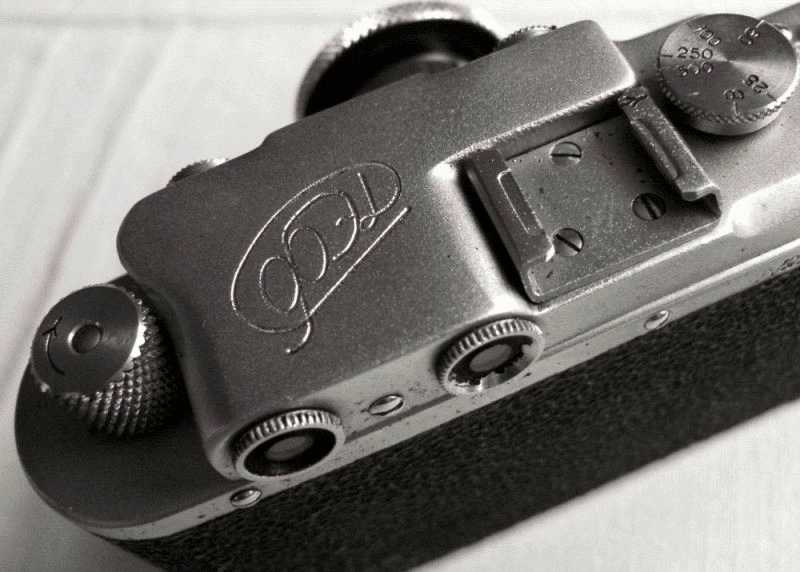
TECHNICAL SPECIFICATION 1934 FEDKAExact copy of a 1932 Leica IIManufactured 1934 - 1955 (Spec as 1934 Fedka) About 700,000 made by the FED Machine Works Kharkov Ukraine (formerly the USSR) All were identical except for the six or seven differant types of engraving Lens is a copy of the collapsible Leitz Elmar Copy - FED or Industar-10 f3.5/50mm (50.8mm) Aperture settings: f3.5, f4.5, f6.3, f9, f12.5, f18 Lens is screw mount 39mm X 26 tpi (not 1mm) Leica-type. Shutter is cloth focal-plane Shutter speeds: Z - 20th, 30th, 40th, 60th, 100th, 200th, 500th. Focusing: 1.25 M to infinity. Coupled range finder with a separate viewfinder. Film is standard 35mm Loading via. a removable bottom. Weight is approximately 630g. Notes: 1948 or 49 onwards Industar-10 lens with "international" f stops, f3.5, f4, f5.6, f8, f11, f16 1953 onwards Shutter speeds changed to 25th, 50th,100th, 200th 500th 1947-49 Industar-10 changed to Tessar 50mm f3.5 optics. Leica Film Leader |
|
|
